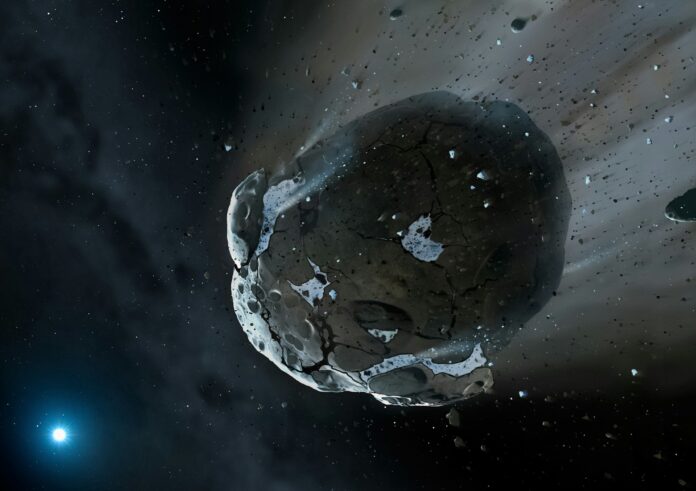Scientists at NASA’s jet propulsion laboratory monitor asteroids 2024 MK and 2011 UL21 using Radar, revealing detailed insights into their characteristics
Recent observations by NASA‘s Deep Space Network, specifically the Goldstone Solar System Radar, have provided valuable data on two asteroids passing by Earth. The first, asteroid 2011 UL21, measuring nearly a mile wide, made its closest approach on June 27, approximately 4.1 million miles away. This asteroid, first discovered by the Catalina Sky Survey in 2011, was imaged for the first time due to its proximity, revealing it to be a binary system with a smaller moonlet orbiting it at a distance of about 1.9 miles. Despite its classification as potentially hazardous, its future orbits pose no immediate threat to Earth.
In a more recent event, asteroid 2024 MK, discovered just days before its closest approach on June 29, came within 184,000 miles of Earth. This 500-foot-wide asteroid, observed using bistatic radar techniques involving both DSS-14 and DSS-13 antennas, displayed an elongated shape with detailed surface features such as concavities, ridges, and boulders. Although such close approaches are rare for asteroids of this size, these observations allowed scientists to gather crucial data on its composition, orbit, and gravitational interaction with Earth.
Embed from Getty ImagesLance Benner, principal scientist at JPL, emphasized the significance of these observations in understanding asteroid characteristics and formation processes. The discovery that asteroids like 2011 UL21 often exist as binary systems provides insights into their structural properties and evolutionary histories within the solar system.
Analysis:
Political:
Politically, NASA’s monitoring of near-Earth asteroids underscores international cooperation in planetary defense. The insights gained from these radar observations contribute to global efforts to assess and mitigate potential asteroid impacts, highlighting the importance of scientific collaboration in addressing planetary threats.
Social:
Socially, public awareness of asteroid monitoring initiatives raises consciousness about planetary safety and the scientific endeavours aimed at protecting Earth from celestial hazards. These efforts foster public engagement and support for scientific research that enhances our understanding of space and its potential impacts on life on Earth.
Economic:
Economically, investments in planetary defence technologies and asteroid monitoring systems represent a proactive approach to safeguarding global infrastructure and resources from potential asteroid impacts. These initiatives not only mitigate potential future costs associated with asteroid impacts but also stimulate technological advancements and innovation in space exploration and defence.
